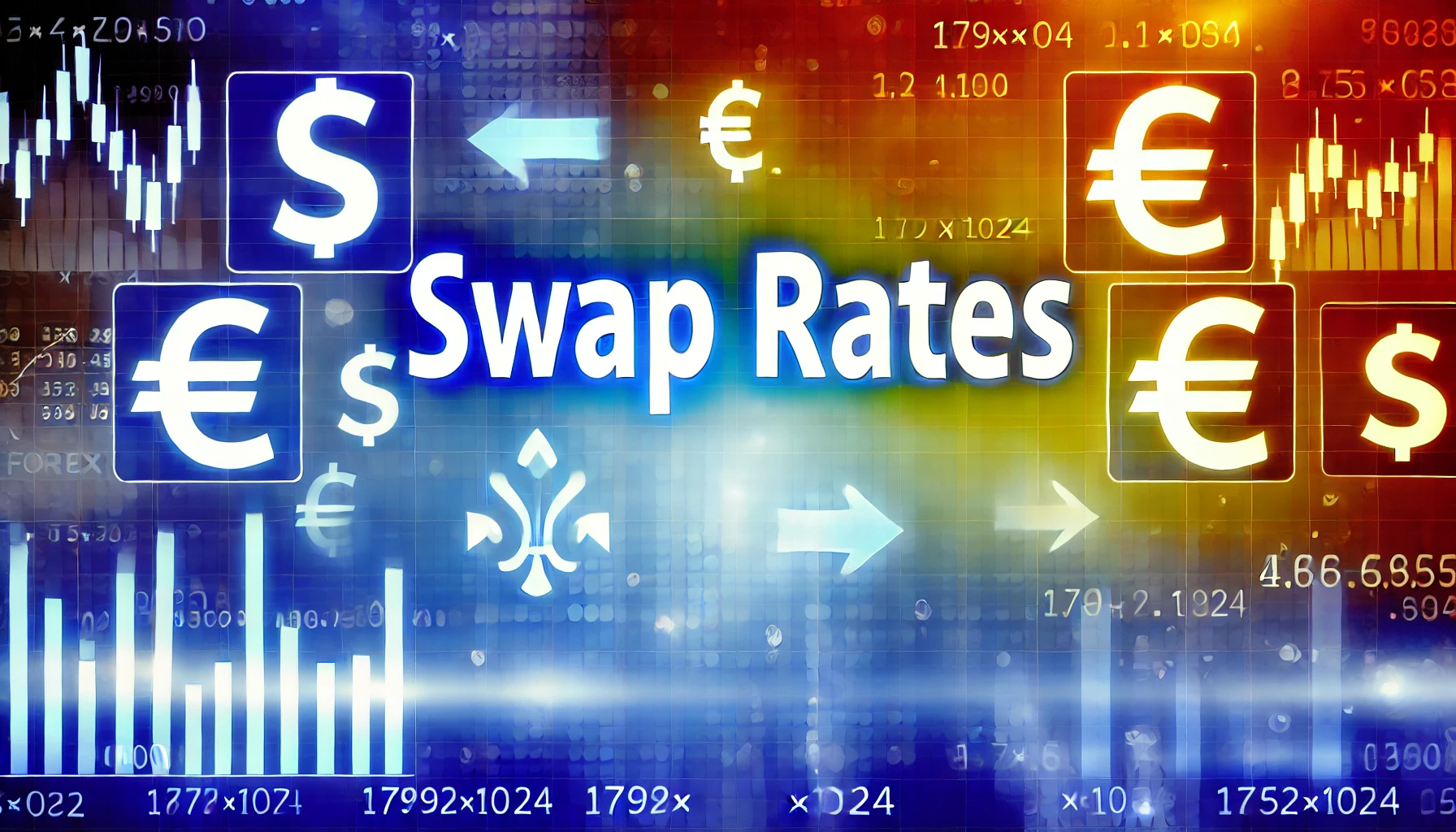Understanding how swap rates work in Forex trading can give traders a significant edge. This comprehensive guide explains what these rates are, how they impact your trading positions, and strategies to effectively incorporate them into your trading plan.
What Are Swap Rates?
Swap rates are interest fees charged or earned for holding a Forex position overnight. They arise from the interest rate differential between the two currencies in a currency pair. Each currency has an interest rate set by its central bank, and when you trade Forex, you essentially borrow one currency to buy another. The swap rate is the difference between these two interest rates.
How Swap Rates Work
When you hold a position overnight, your broker will either pay you or charge you a swap fee, depending on the interest rate differential and the direction of your trade. For instance:
- Long Positions: If you buy a currency pair where the base currency has a higher interest rate than the quote currency, you will earn a positive swap.
- Short Positions: Conversely, if you sell a currency pair where the base currency has a lower interest rate than the quote currency, you will incur a negative swap.
Calculating Swap Rates
The rates are typically quoted in pips per lot and can vary between brokers. To calculate the swap rate for a specific position, you can use the following formula:
Swap Rate=(Interest Rate of Bought Currency−Interest Rate of Sold Currency)×Position Size\text{Swap Rate} = (\text{Interest Rate of Bought Currency} – \text{Interest Rate of Sold Currency}) \times \text{Position Size}
It’s essential to check with your broker for their specific swap rate details, as these can differ.
Impact of Swap Rates on Trading
They can have a significant impact on your trading, especially for long-term positions. Positive rates can add to your profits, while negative rates can erode your gains. Therefore, understanding and monitoring these rates is crucial for managing your overall trading performance.
Strategies for Using Swap Rates in Forex Trading
- Carry Trade Strategy: This strategy involves buying a currency with a high interest rate and selling a currency with a low interest rate, aiming to profit from the interest rate differential. The key to a successful carry trade is to choose currency pairs with stable and predictable interest rate policies.
- Hedging: Traders can use these rates to hedge their positions. By taking positions in pairs with favorable rates, traders can offset the costs of holding positions in other pairs with less favorable rates.
- Swap Arbitrage: This strategy involves taking advantage of differences in the rates offered by different brokers. Traders can open positions with brokers offering positive rates and avoid or hedge against negative swaps.
Choosing the Right Broker
Not all brokers offer the same rates, and some may provide swap-free accounts for traders who cannot pay or earn interest due to religious reasons (Islamic accounts). It’s crucial to compare these rates across brokers and choose one that aligns with your trading strategy and financial goals.
Tools for Managing Swap Rates
Many trading platforms, such as MetaTrader 4 and 5, offer tools to calculate and display these rates directly on the platform. These tools can help you make informed decisions about holding positions overnight and managing your trades effectively.
Conclusion
Understanding and leveraging swap rates can significantly enhance your Forex trading strategy. By incorporating these rates into your trading plan, you can optimize your trades, manage risks, and potentially increase your profitability.


